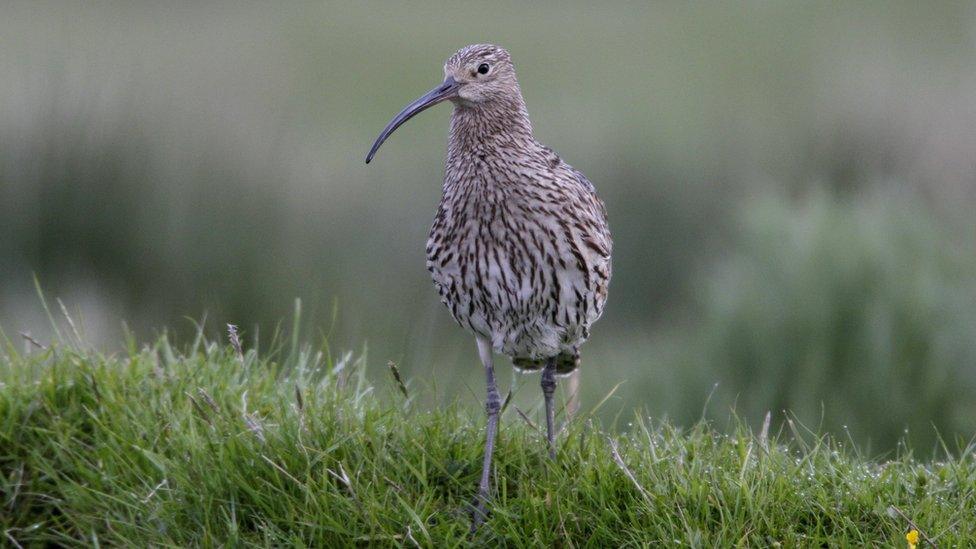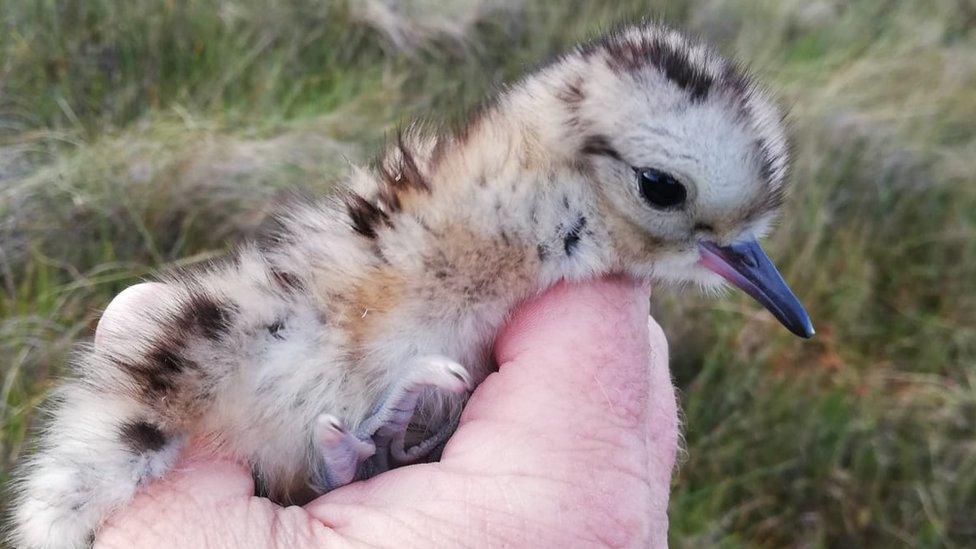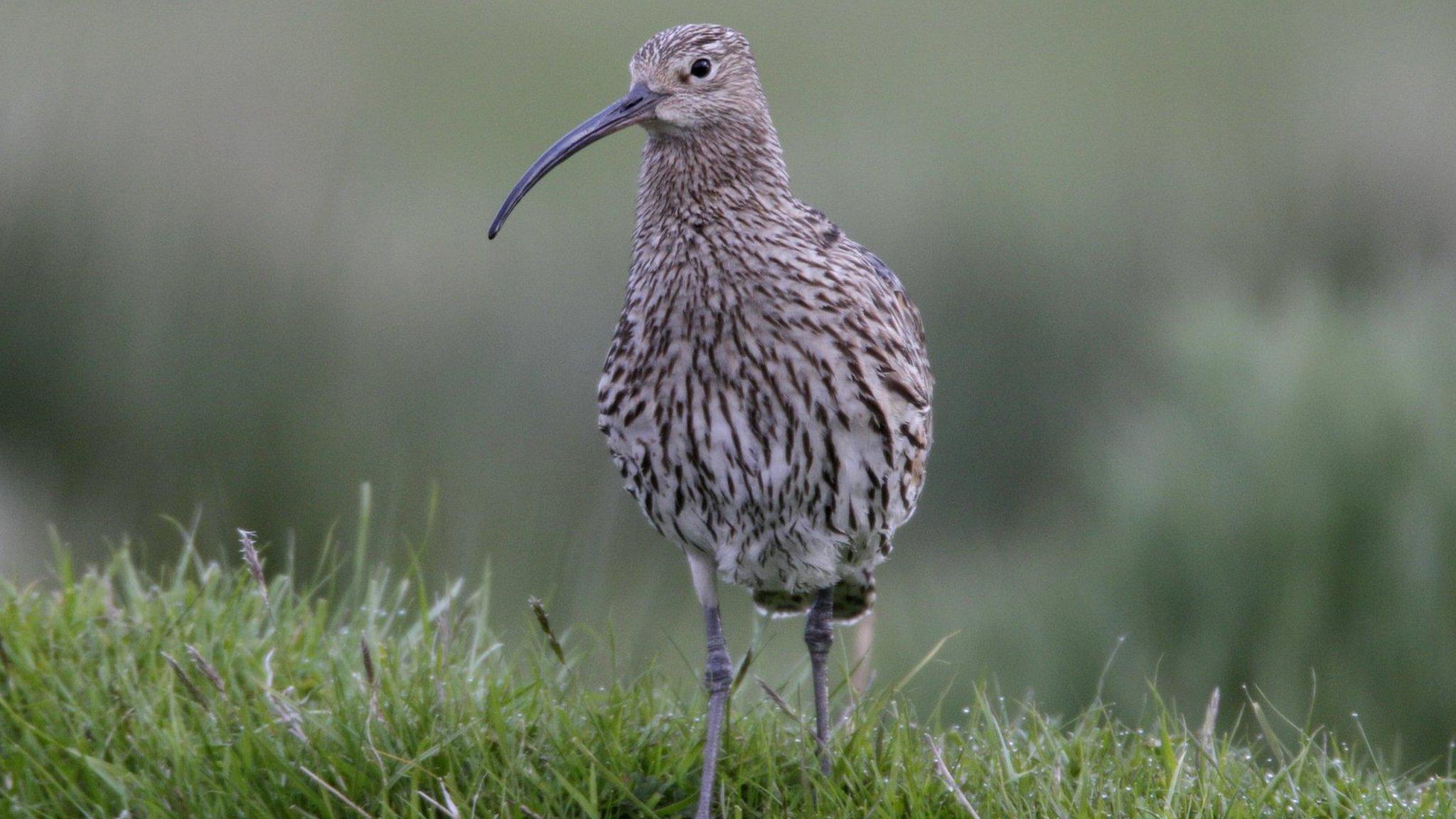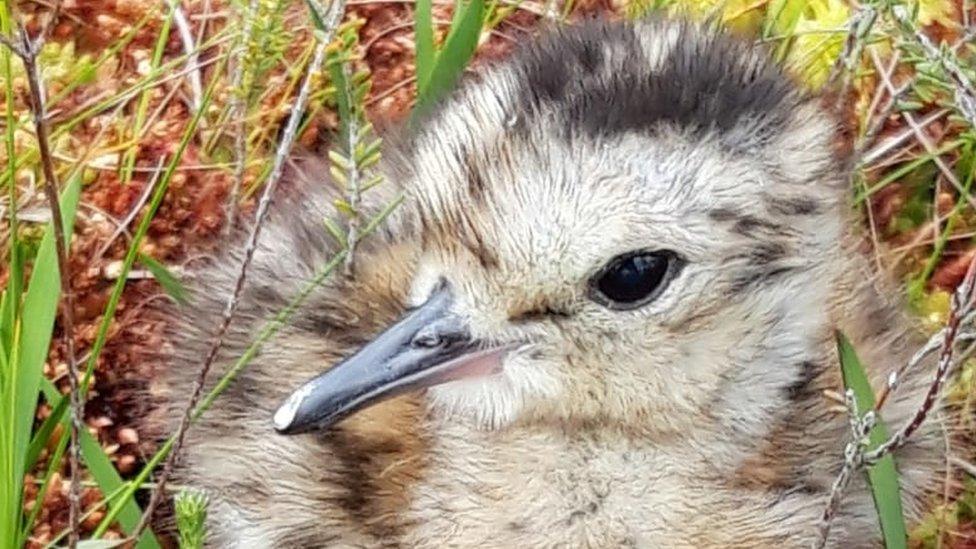Curlew: 'Flicker of hope' for one of NI's most endangered birds
- Published
- comments

Without intervention, the curlew was precited to be extinct in Northern Ireland within a decade
Conservationists say there is now "a flicker of hope" for one of Northern Ireland's most endangered birds.
It comes after another bumper breeding season for the curlew.
Once a common sight in Northern Ireland, the curlew has declined by 82% since 1987.
In the Antrim Hills, measures including placing electric fencing around the ground-level nesting sites resulted in 55 chicks fledging successfully.
And in County Fermanagh, 43 breeding pairs were recorded across the RSPB's Lower Lough Erne nature reserve and other supported lands around the Lough.
The fall in numbers is due to habitat loss, low breeding productivity and predation.
Curlew in crisis
There are thought to be just 150 breeding pairs of the bird left in Northern Ireland.
Without intervention, the species was predicted to be extinct within the decade.
The RSPB has been working with farmers and landowners as part of the EU-funded four-year-long "Curlews in Crisis" project.
Eight thousand hectares of land were monitored across the Antrim Hills.
Almost 40 pairs of curlew were detected with 30 nests built.

The RSPB's reserve at Lower Lough Erne is now home to the highest density of breeding curlew in Ireland
With 27 protective electrified fences in place, the birds achieved a 96% hatching success rate - something RSPB NI's Conservation Officer Katie Gibb said she was "thrilled" about.
"With 55 chicks fledging this year and the return of juvenile birds from previous years, there is a flicker of hope for species recovery for Curlew in Northern Ireland," she said.
"Within the first three years of the project, in conjunction with DAERA's Environmental Farming Scheme (EFS) group option which supports farmers to help curlew on their land, we have managed to get a total of 152 chicks fledged."
The charity's reserve at Lower Lough Erne is now home to the highest density of breeding curlew in Ireland, with 43 pairs recorded across 200 hectares of lowland wet grassland.
Estate manager Amy Burns said it was "an amazing achievement" and a "big increase" from the 36 pairs recorded last year.
Related topics
- Published8 February 2023

- Published7 June 2022

- Published2 September 2020

- Published21 May 2018
